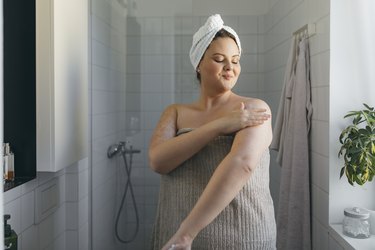
Feeling the burn? Whether you just missed a few spots when applying sunscreen or you blanked on sun safety all together (yikes!), it happens. According to the U.S. Department of Health & Human Services, more than 1 in 3 Americans reports getting fried to a crisp each year.
While the best solution, of course, is to avoid turning into a lobster in the first place by slathering on sunblock, staying in the shade and covering up exposed skin, there are ways to soothe the burn if you slipped up.
Video of the Day
Video of the Day
In general, over-the-counter meds are the most effective method to soothe a sunburn, says dermatologist Janiene Luke, MD, associate professor and residency program director at the Loma Linda University Department of Dermatology and spokesperson for the Skin of Color Society
NSAIDs — which include aspirin, ibuprofen (like Advil) and naproxen (Aleve) — are oral anti-inflammatories and pain reducers. "Taking an NSAID is the best way to relieve pain associated with sunburn," Dr. Luke says. "It can also help with swelling and redness."
To target local sunburn — say, on your face — smooth a topical 1 percent hydrocortisone cream onto the irritated area. "Hydrocortisone cream is the fastest way to remove redness and itching on your face," Dr. Luke says, and you can use it twice a day for up to a week.
Want to go the DIY route instead? These quick and easy natural home remedies for sunburn will reduce redness and soothe painful, itchy skin overnight.
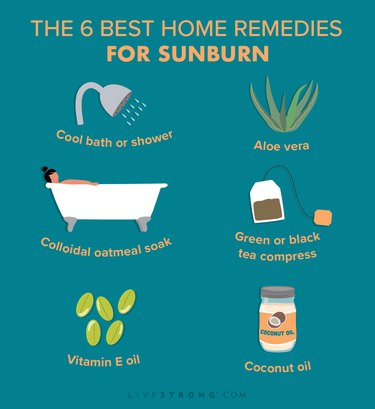
1. A Cool Compress, Bath or Shower

For instant sunburn relief, nothing tops chilly H2O to cool down your skin and ease the initial symptoms associated with getting overcooked.
"A cool soak or washrag helps calm irritation and inflammation, and improves the burning sensation," says Dr. Luke.
How to Use It
Turn the water temperature to just below lukewarm. "If you're sunburnt all over, spend five to 10 minutes in the shower or bath," Dr. Luke says. "Repeat every two hours as needed to remove symptoms."
Be sure to opt for a low flow when showering. According to a 2014 review in the International Journal of Research in Pharmacy and Chemistry, strong water pressure could hurt. The article also advises folks to stick to baths if you have blisters, because a shower could cause them to pop. And avoid using soap, which could further irritate your skin.
After bathing, either let your skin air dry or use your towel to gently pat yourself dry — no rubbing.
If just one particular area got too many rays (rather than a full-body burn), saturate a washcloth in cool water and apply it to your sun-sizzled skin every couple of hours while discomfort persists, for five to 10 minutes at a time.
But skip the ice packs: "Applying ice directly can further damage the skin," Dr. Luke says.
2. Aloe Vera
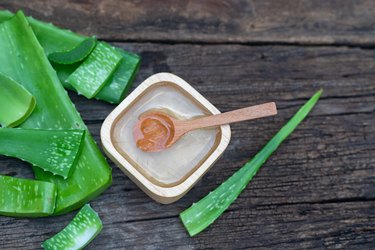
It's an oldie but a goodie! This therapeutic plant has been used in traditional medicine for thousands of years. "Aloe has anti-inflammatory properties and can soothe the skin," Dr. Luke says. (That's why it's a star ingredient in many of the best after-sun lotions and products.)
According to a September 2012 review in Natural Medicine Journal, 97.5 percent pure aloe vera gel significantly reduced inflammation caused by sunburn.
Meanwhile, a January 2019 review in the Iranian Journal of Medical Sciences suggested that aloe vera retains skin moisture and helps improve burn wound healing.
How to Use It
"For best results, store it in the fridge and apply it while cool," Dr. Luke says. "Use it every few hours if you are feeling uncomfortable."
The International Journal of Research in Pharmacy and Chemistry article recommends gently dolloping aloe vera gel onto sensitive skin using the tips of your fingers. Instead of rubbing it in all the way, like you normally would when applying lotion, leave a thick layer on top of the burn to prevent irritation and dehydration.
If you happen to have a live aloe plant, sweet! Break off a chunk, squeeze out the goo and use that. Otherwise, Dr. Luke is a fan of:
- Banana Boat Soothing Aloe After Sun Gel ($4.97, Walmart.com)
- Burt's Bees Aloe & Coconut Oil After Sun Soother ($7.69, Walmart.com)
3. Colloidal Oatmeal
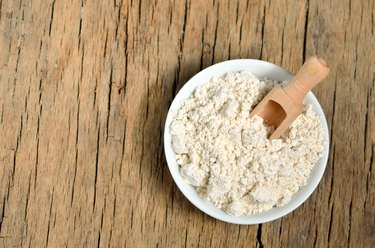
These aren't your grandma's Quaker Oats. Colloidal oatmeal is super-finely milled whole oat kernels.
"It is anti-inflammatory, moisturizing and helps repair the skin barrier," Dr. Luke says. "I recommend using a product formulated with colloidal oatmeal to help relieve some of the symptoms associated with a sunburn."
A January 2015 study in the Journal of Drugs in Dermatology found that colloidal oatmeal helps decrease itchiness in dry, irritated skin. (It's also a great natural remedy for eczema.)
"The inflammatory cytokine IL-8 has been linked to itch and itchy skin diseases," Dr. Luke says. "Colloidal oatmeal has been shown to decrease IL-8 production." (Heads up, though: The study was funded by Johnson & Johnson, which makes Aveeno products).
How to Use It
Fill a tub with cool water and pour a packet of colloidal oatmeal bath treatment — Dr. Luke likes Aveeno Soothing Bath Treatment ($6.97, Walmart.com). Soak for 15 minutes.
In a pinch, you can grind up whole oats (not the quick-cooking kind) and add about half a cup to the bath instead. But this DIY hack isn't quite as effective as purchasing actual colloidal oats, which have been ground into micro-particles.
4. Green and Black Tea
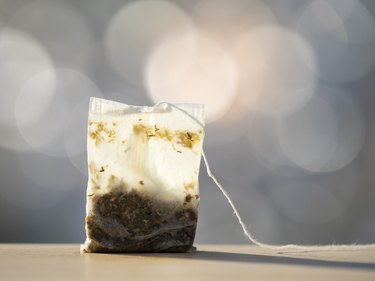
Another win for tea!
"Thanks to its anti-inflammatory properties, green and black tea not only help reduce the symptoms of sun damage, but can also help protect your skin from burns in the first place," Dr. Luke says. "Tea contains high levels of a type of antioxidant called polyphenols, which decrease the harmful effects of UV exposure."
A September 2016 review in the International Journal of Molecular Science found that tea (whether applied topically or ingested) helped provide protection from sunburn. That said, tea drinkers should still wear sunscreen!
How to Use It
"Place tea bags in a cup of room temperature water for about 30 minutes, until the water changes color," Dr. Luke says. "Then, gently press the tea bags onto your burnt skin."
Let the bags sit on your skin for five to 10 minutes. Repeat as needed.
Related Reading
5. Coconut Oil
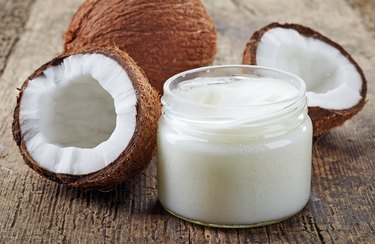
This "superfood" won't help with the acute effects of sunburn, when your skin is inflamed and irritated, but feel free to slather it on once your skin has started to heal. "It is very moisturizing and can help soothe dryness if your skin has started to peel," Dr. Luke says.
A January 2019 study in the Journal of Traditional and Complementary Medicine found that coconut oil is anti-inflammatory and improves the skin barrier, leading to greater skin hydration.
6. Vitamin E Oil
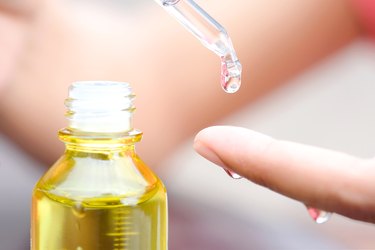
Although older animal research found that applying vitamin E to skin reduced sunburn damage, current human studies are lacking. Still, it couldn't hurt to try.
"Vitamin E oil could be moisturizing to the skin," Dr. Luke says.
Once your skin has started peeling, squeeze a couple of drops from a vitamin E capsule into your regular lotion and slather it over dry skin.
How Long Does a Sunburn Last?
According to the U.S. Food & Drug Administration (FDA), when UV rays reach your skin, they damage your epidermis, which is the outermost layer of skin. This triggers an immune response that boosts blood flow to the compromised skin, making it red, swollen and warm to the touch. The injured cells send a pain signal to the brain, which is why your skin feels like it’s on fire. The FDA says it can take between six to 48 hours for the full of effects of sunburn to show up.
“The skin heals itself over the course of three to seven days, and most people begin to feel more comfortable between 24 to 72 hours after their symptoms appear, as inflammation subsides,” Dr. Luke says.
At this point, white blood cells, which protect you from infection, remove the damaged cells. Enter, flaking and itching. “The dead skin cells dry and peel off, revealing new skin underneath,” Dr. Luke says. “Typically, the whole process is done in about a week to a week and a half.”
What About Witch Hazel?
Internet chatter claims this medicinal plant can be used on sun-scorched skin to speed up healing time, minimize redness and prevent peeling.
"People also think witch hazel can relieve discomfort, as it is thought to have anti-inflammatory properties from its high tannin levels," Dr. Luke says.
So what's the real deal? "It might be slightly helpful, but I typically don't recommend witch hazel for sunburn because it is an astringent, which can be drying," Dr. Luke says, pointing out that after too much sun exposure, your skin is already dehydrated.
What About Vinegar?
White vinegar, distilled vinegar, apple cider vinegar — they've all been touted as cures for OD'ing on UV. Rumor has it the astringent properties can alleviate pain and kickstart healing, while the acetic acid mitigates itching and inflammation.
But this is total BS. "Vinegar may cause more irritation because it is highly acidic," Dr. Luke says. "It can further damage skin that is already compromised."
In fact, a June 2015 paper in the Journal of Clinical and Aesthetic Dermatology found that vinegar contains 4 to 8 percent acid, which can erode the skin and cause significant chemical burns. It's pretty much the last thing you want to put on raw, blistering, sun-scorched skin.
What About Baking Soda?
Can baking soda be good for more than fluffy blueberry muffins?
"Some people like to create a baking soda paste to help with sunburn, because they believe it might adjust the pH of the skin to be more alkaline," Dr. Luke says. "But there is no science around this method."
- U.S. Department of Health & Human Services: "Skin Cancer: Quick Facts from the Surgeon General"
- AAD: "Survey: 60% of Americans Say They Have Gotten Sunburned So Badly Their Clothes Were Uncomfortable"
- Journal of Traditional and Complementary Medicine : "In vitro anti-inflammatory and skin protective properties of Virgin coconut oil"
- Journal of Clinical and Aesthetic Dermatology : "Chemical Bum from Vinegar Following an Internet-based Protocol for Self-removal of Nevi"
- International Journal of Research in Pharmacy and Chemistry: "EVALUATION AND MANAGEMENT OF SUNBURN"
- Natural Medicine Journal: "Aloe Vera Gel Research Review"
- Iranian Journal of Medical Sciences : "The Effect of Aloe Vera Clinical Trials on Prevention and Healing of Skin Wound: A Systematic Review "
- Journal of Drugs in Dermatology : "Anti-inflammatory activities of colloidal oatmeal (Avena sativa) contribute to the effectiveness of oats in treatment of itch associated with dry, irritated skin"
- International Journal of Molecular Science : "Polyphenols and Sunburn"
- FDA: "The Risks of Tanning"
- Oregon State University: "Vitamin E and Skin Health "
Is this an emergency? If you are experiencing serious medical symptoms, please see the National Library of Medicine’s list of signs you need emergency medical attention or call 911.